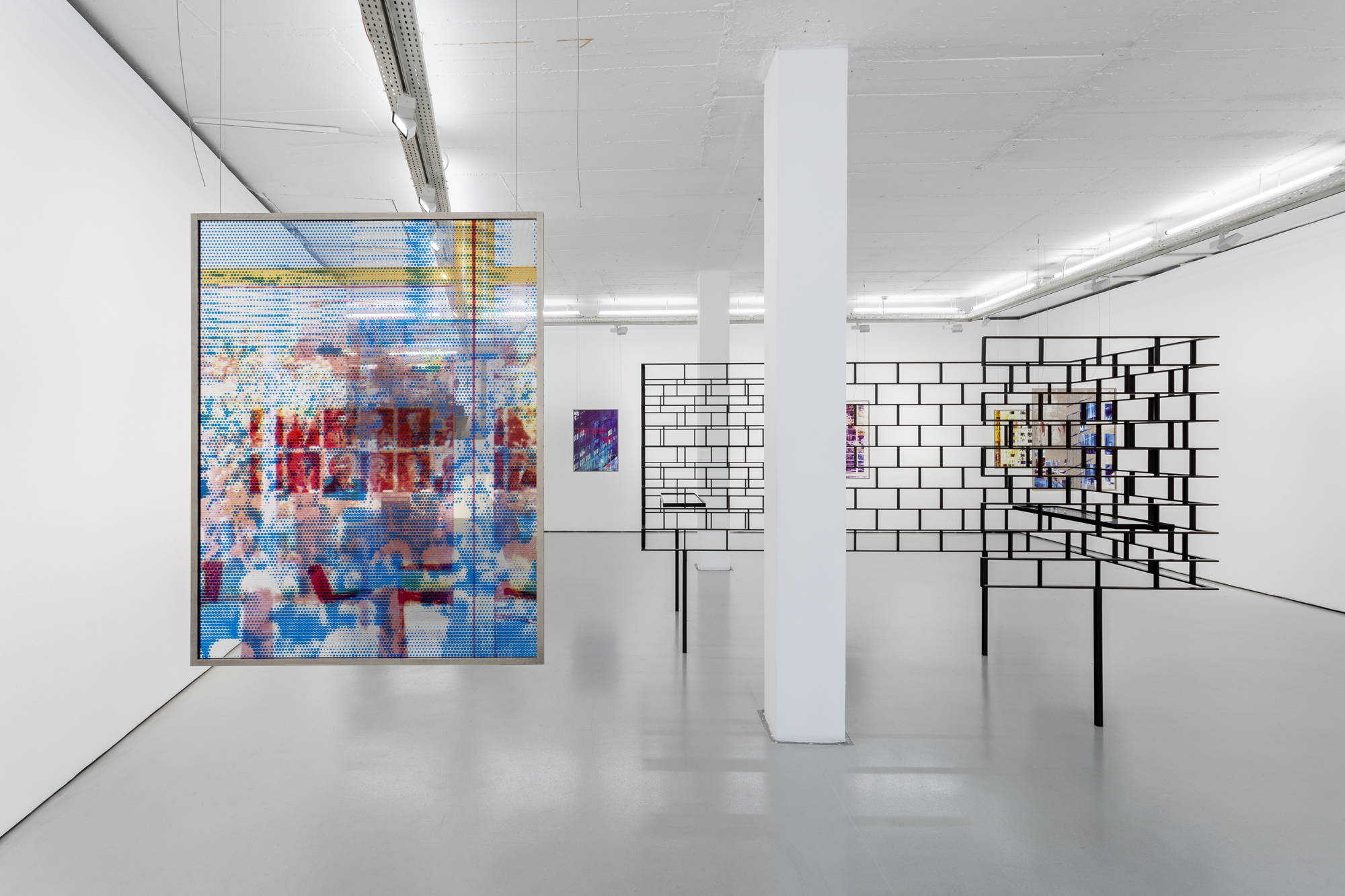
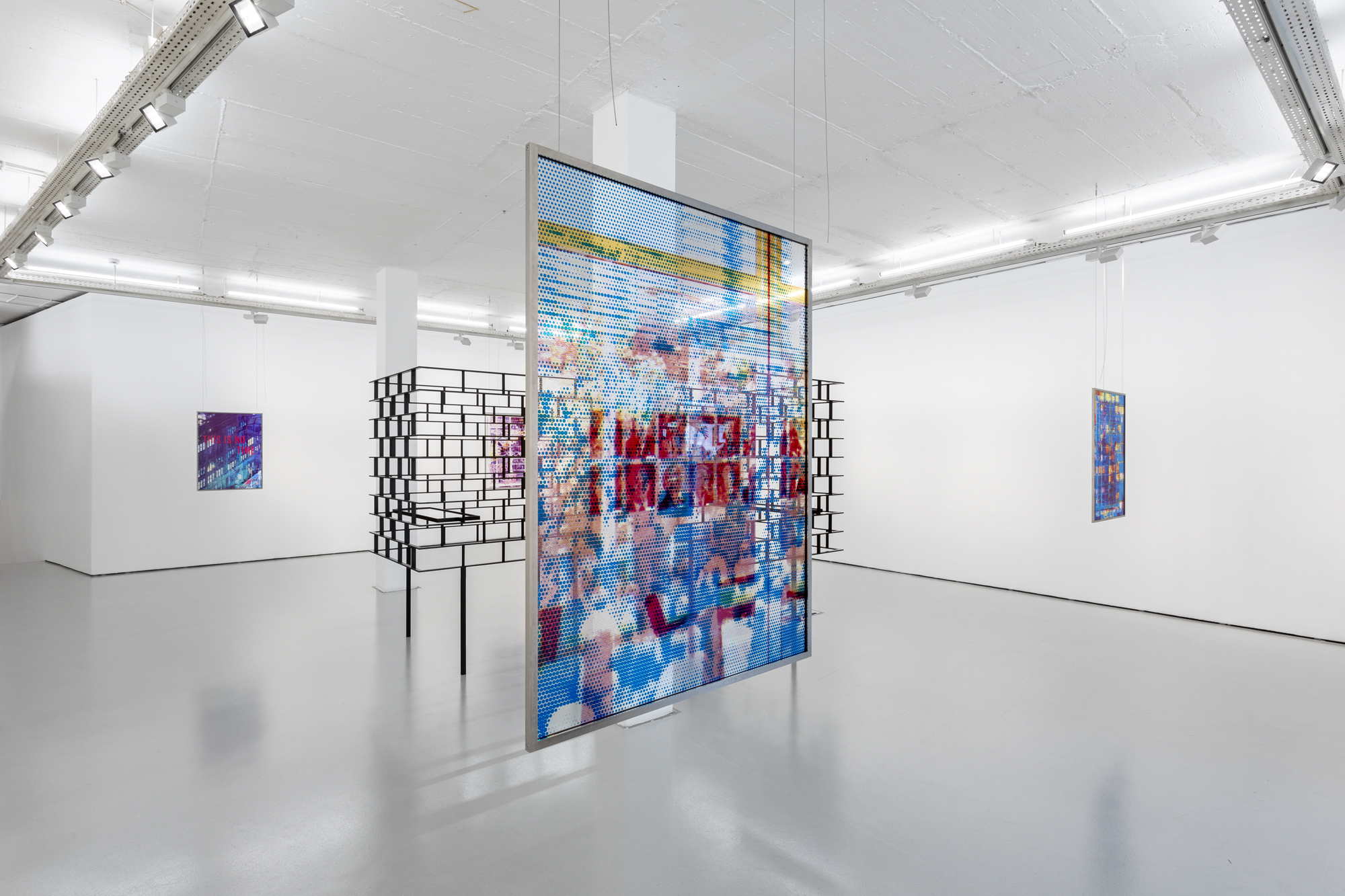
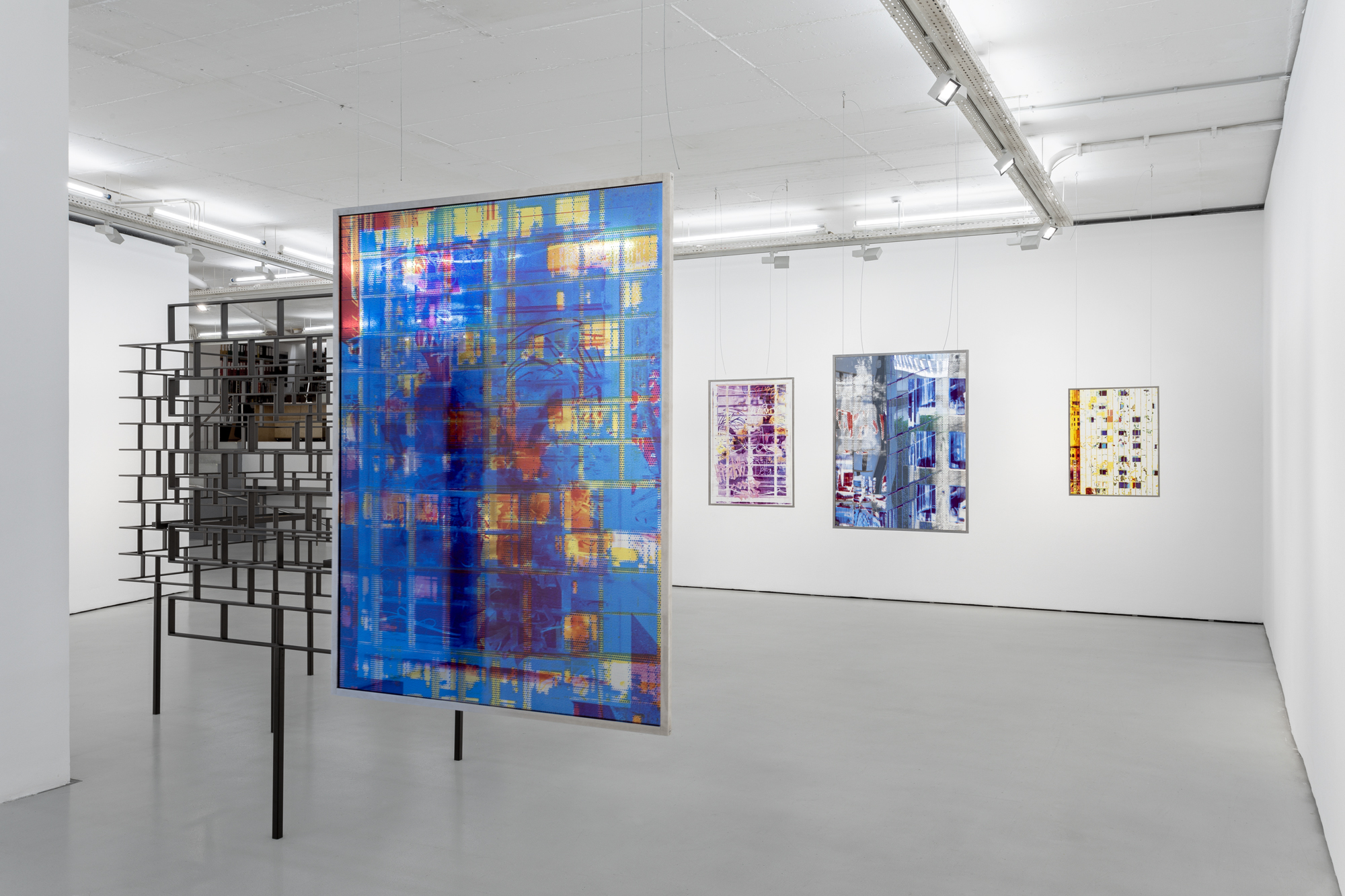
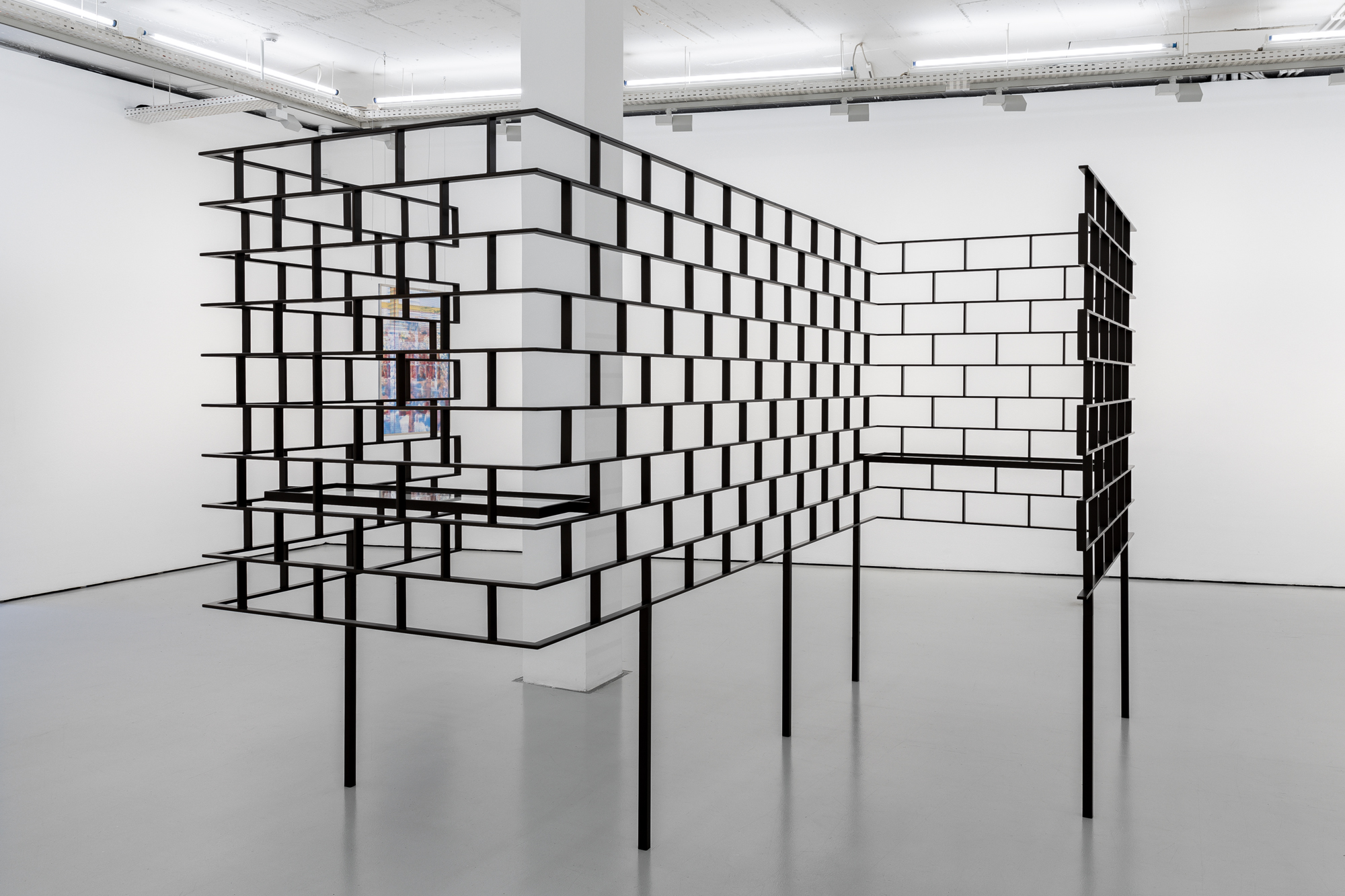
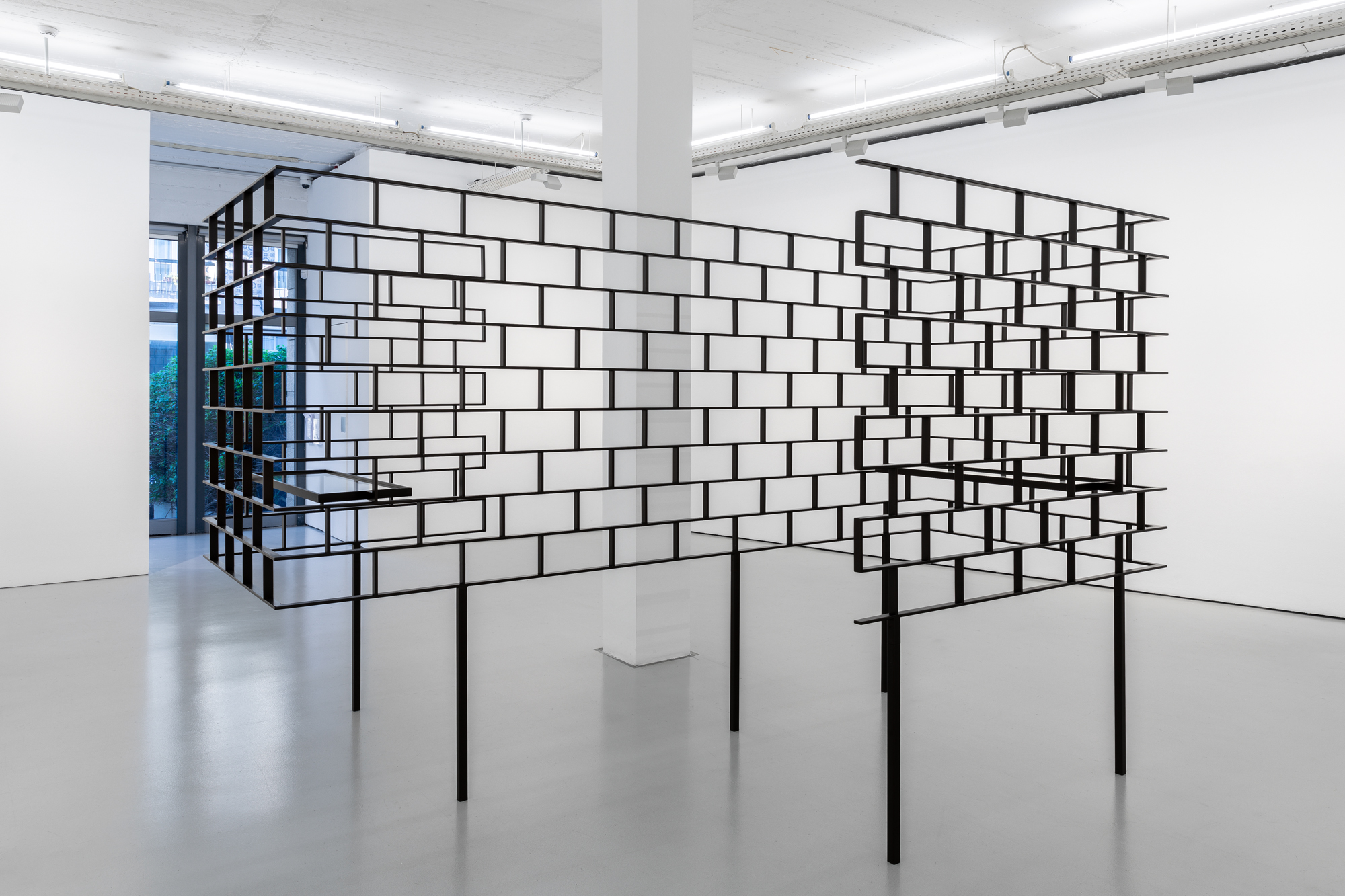
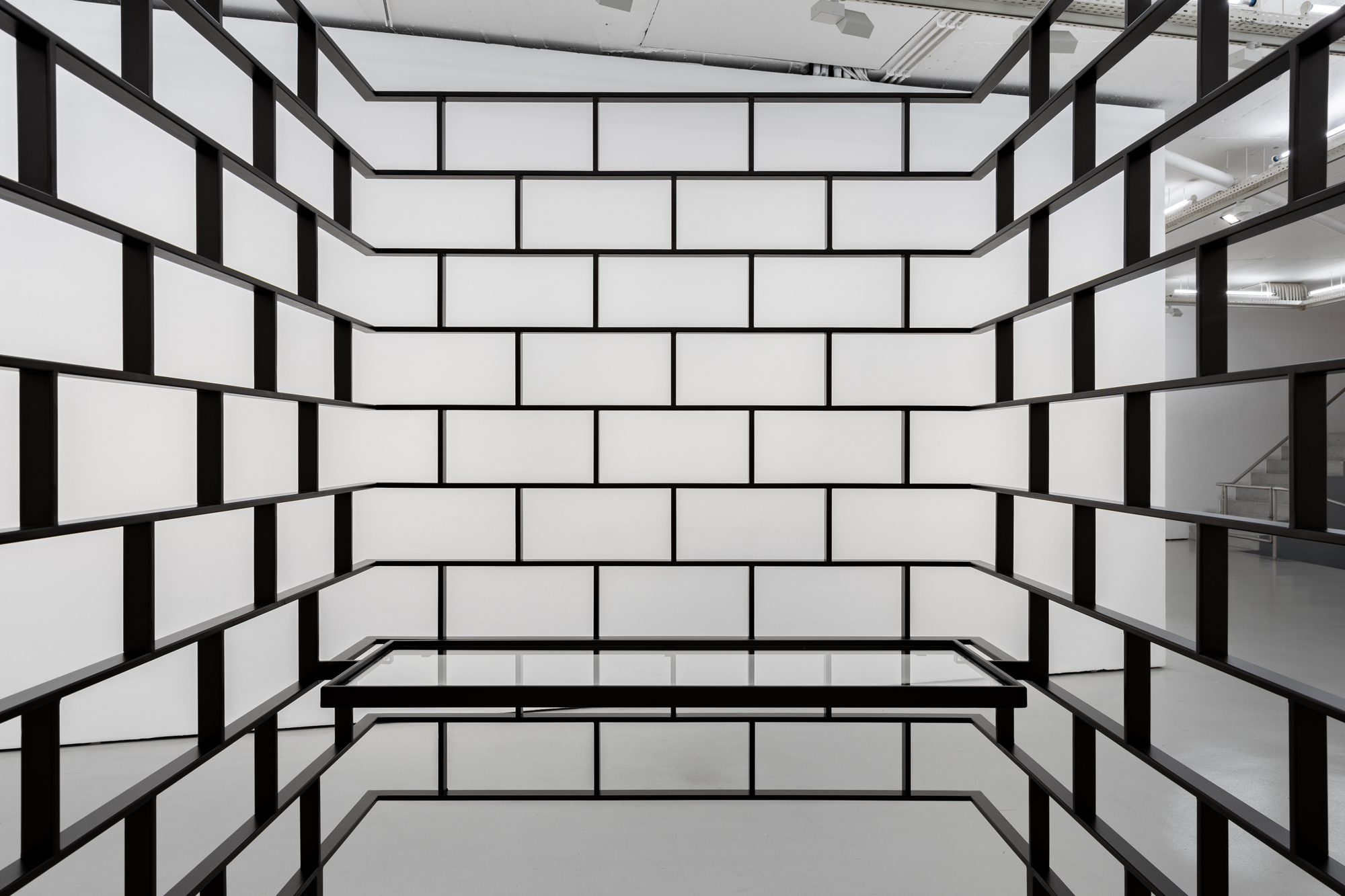

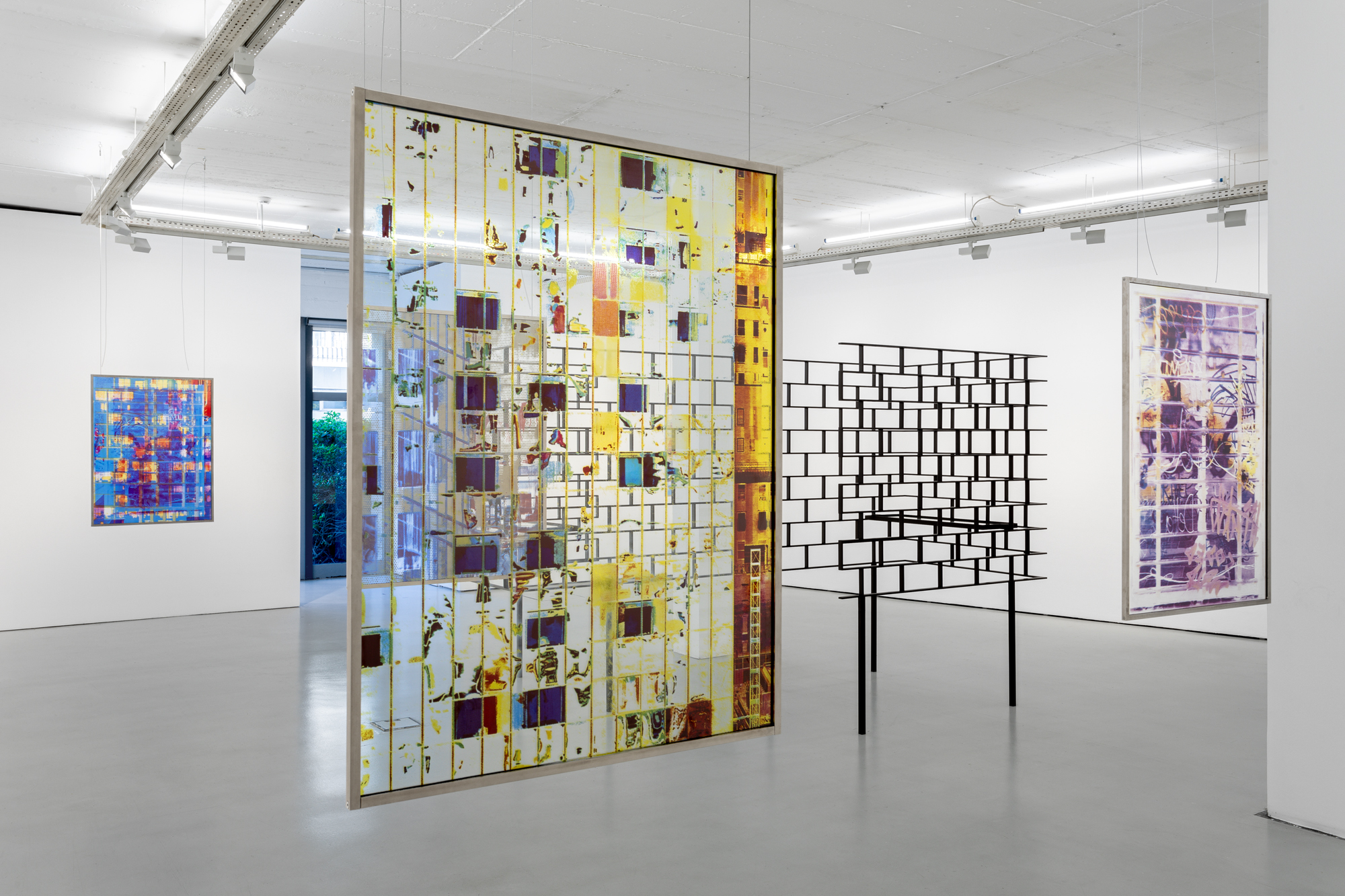
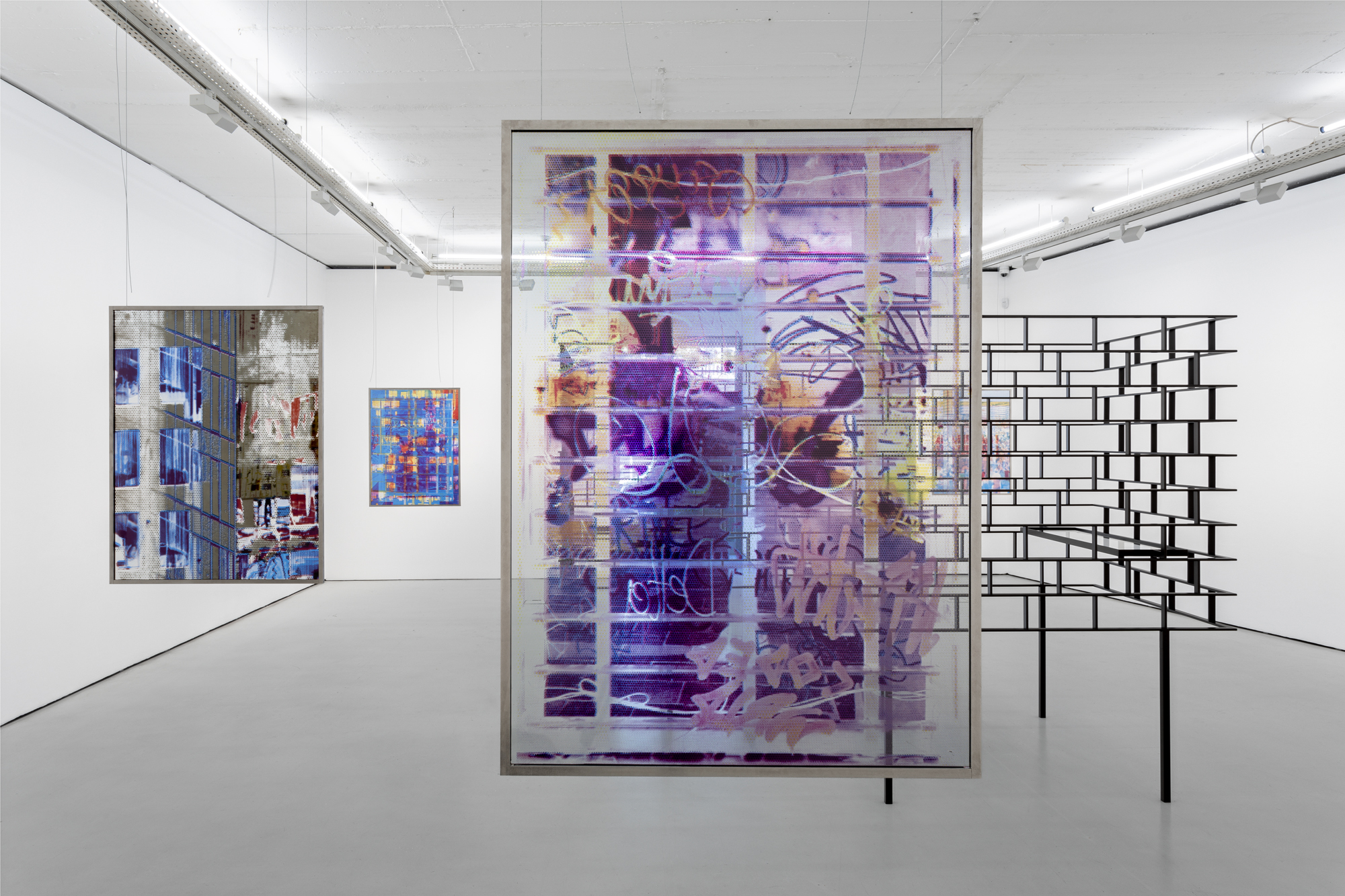
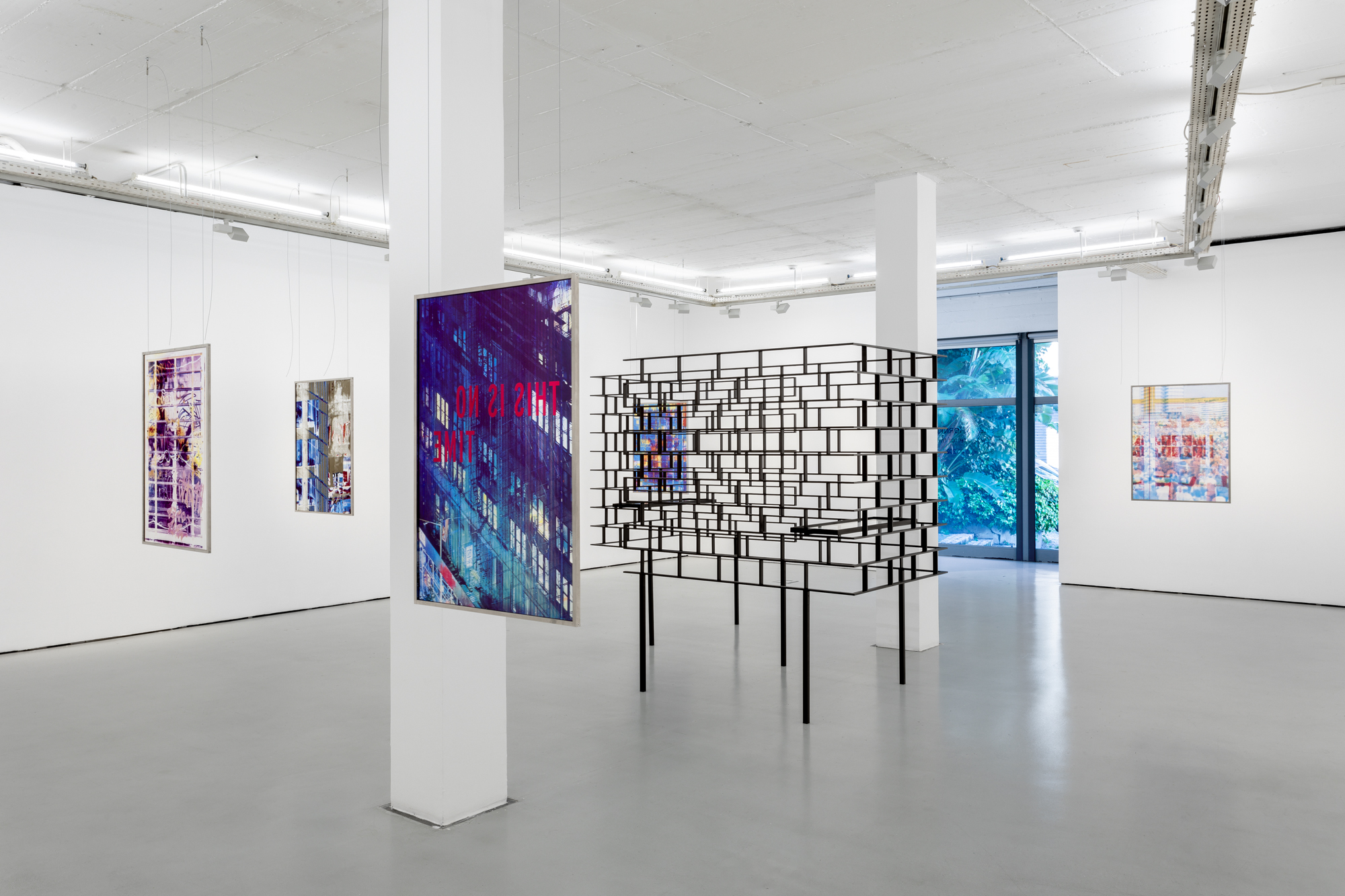
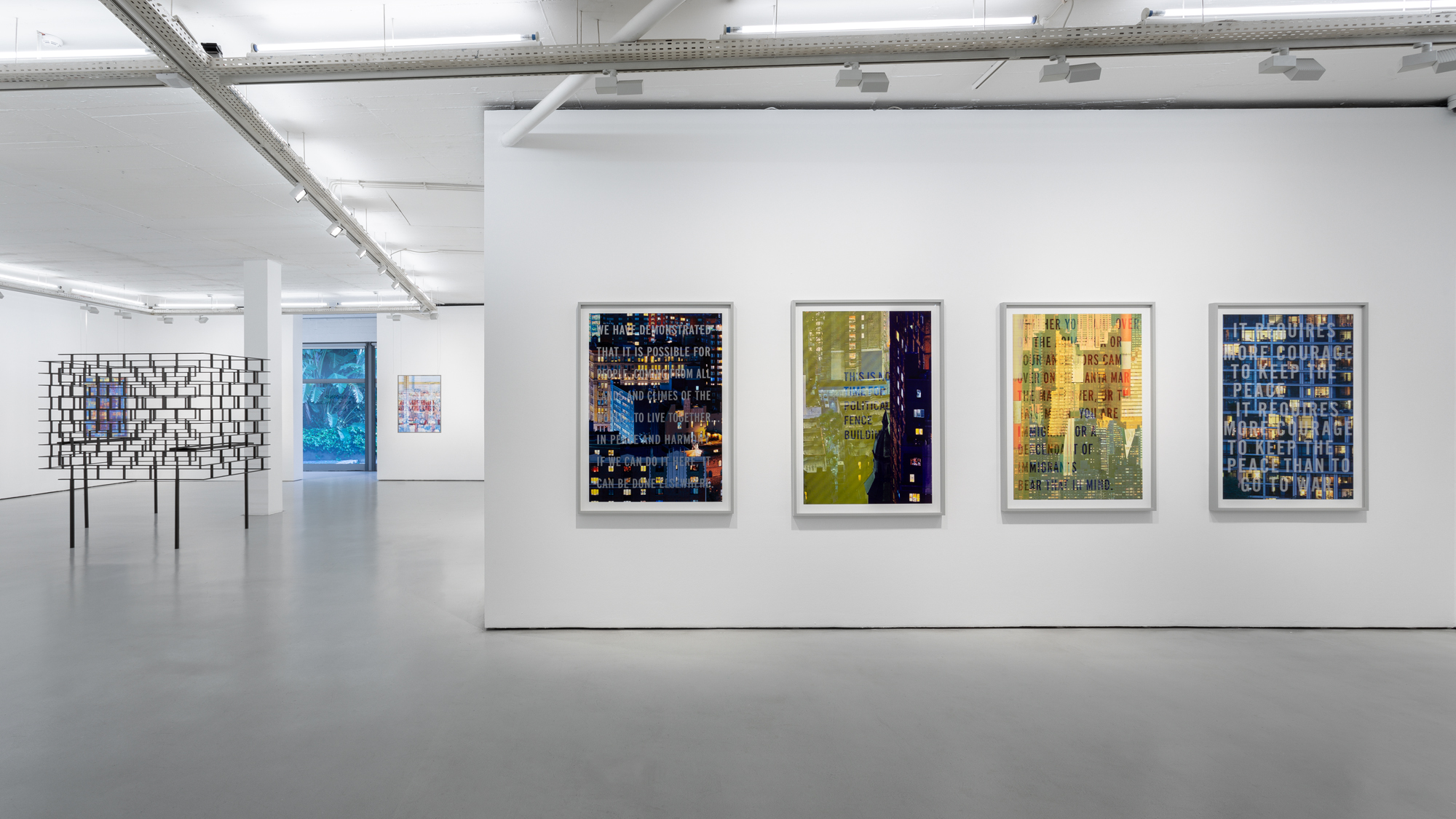
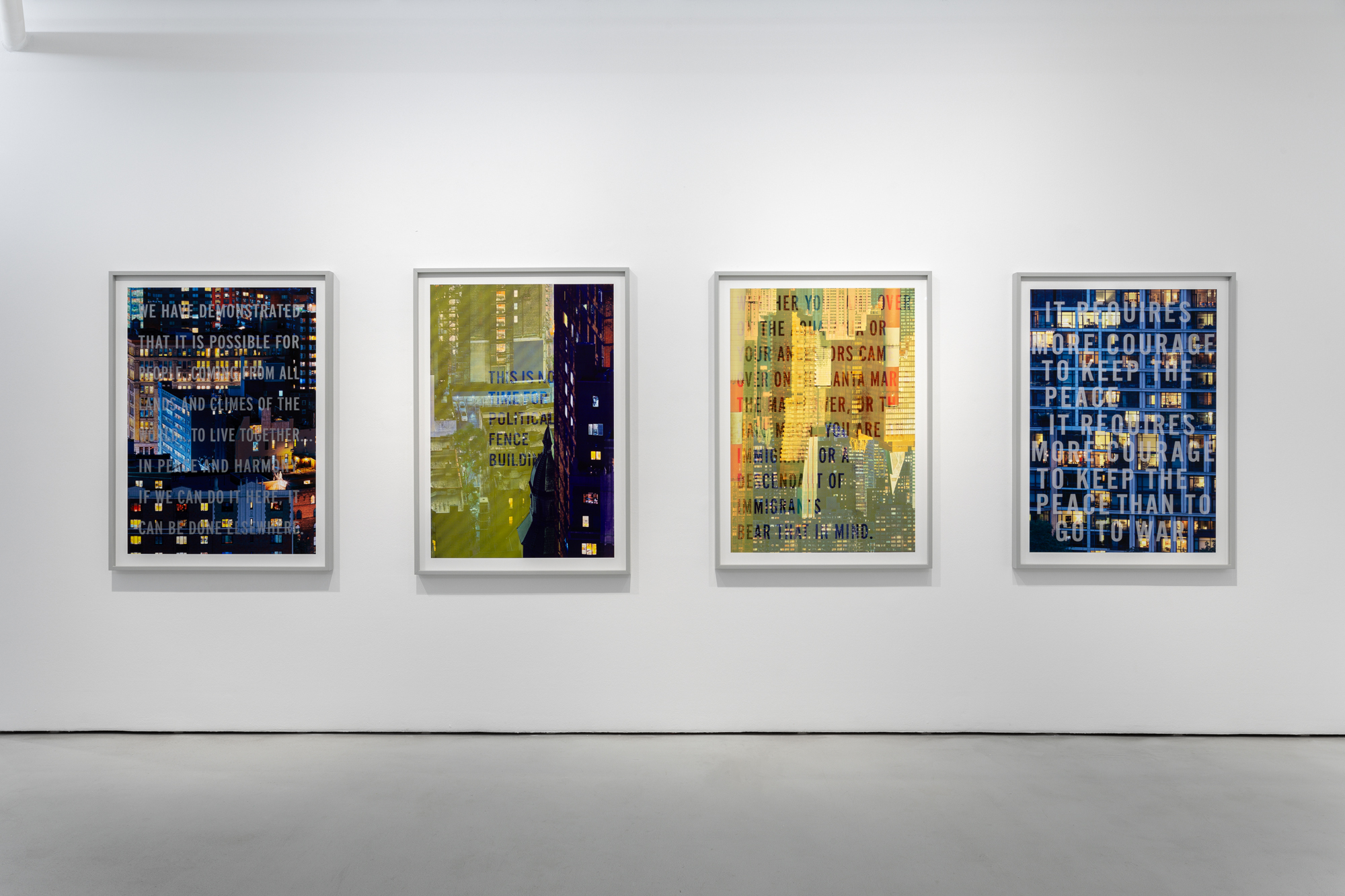
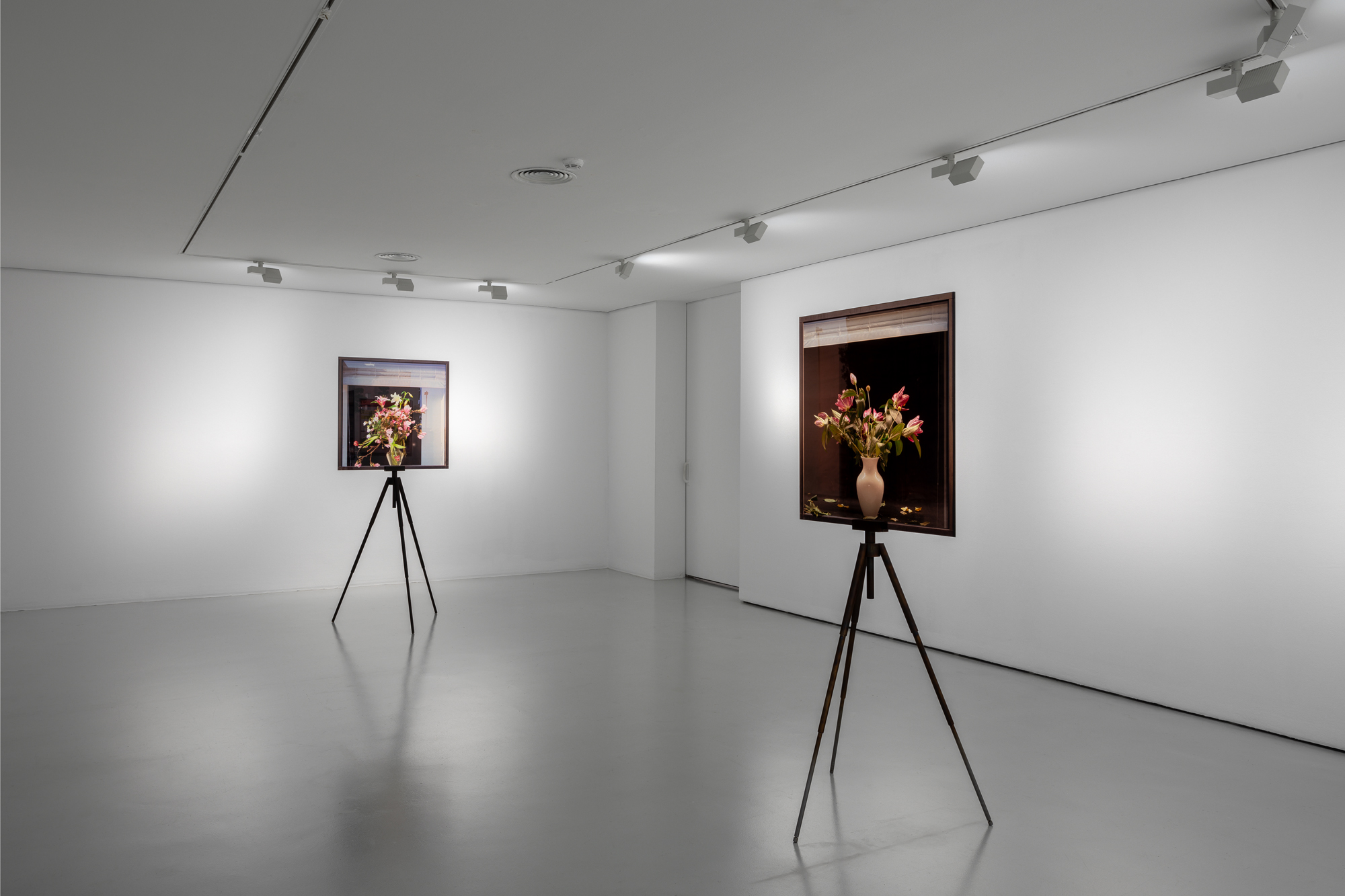
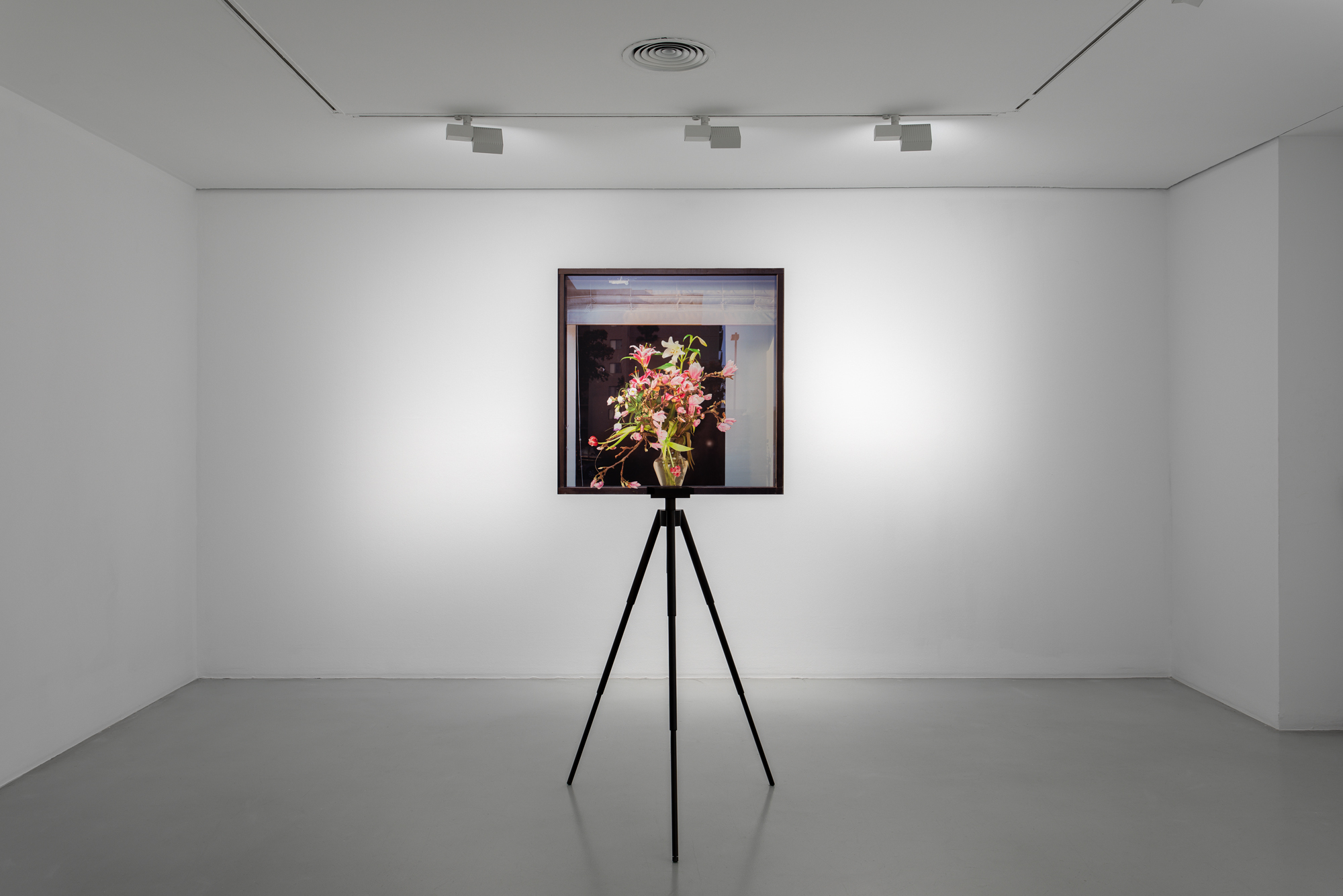
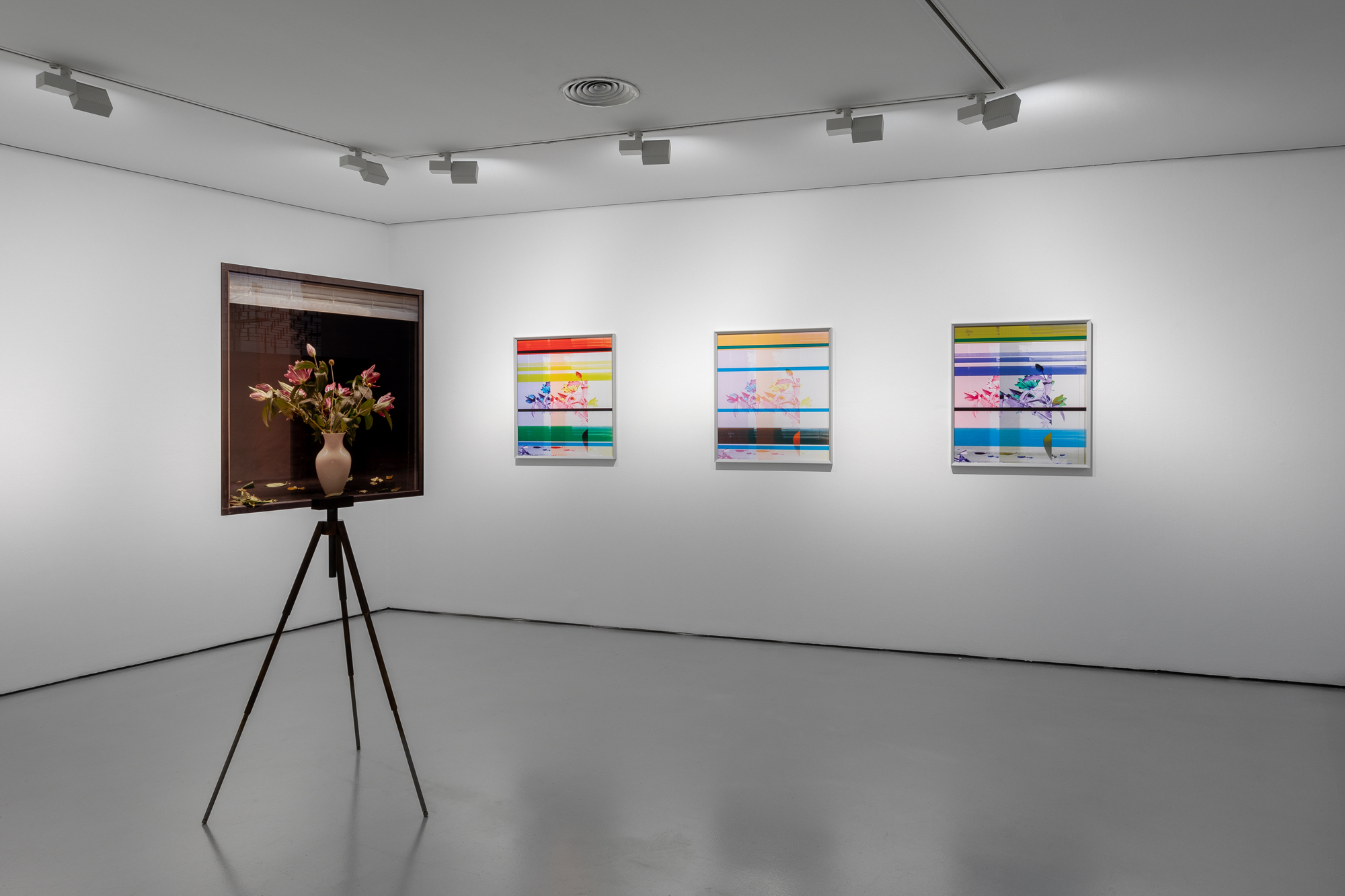
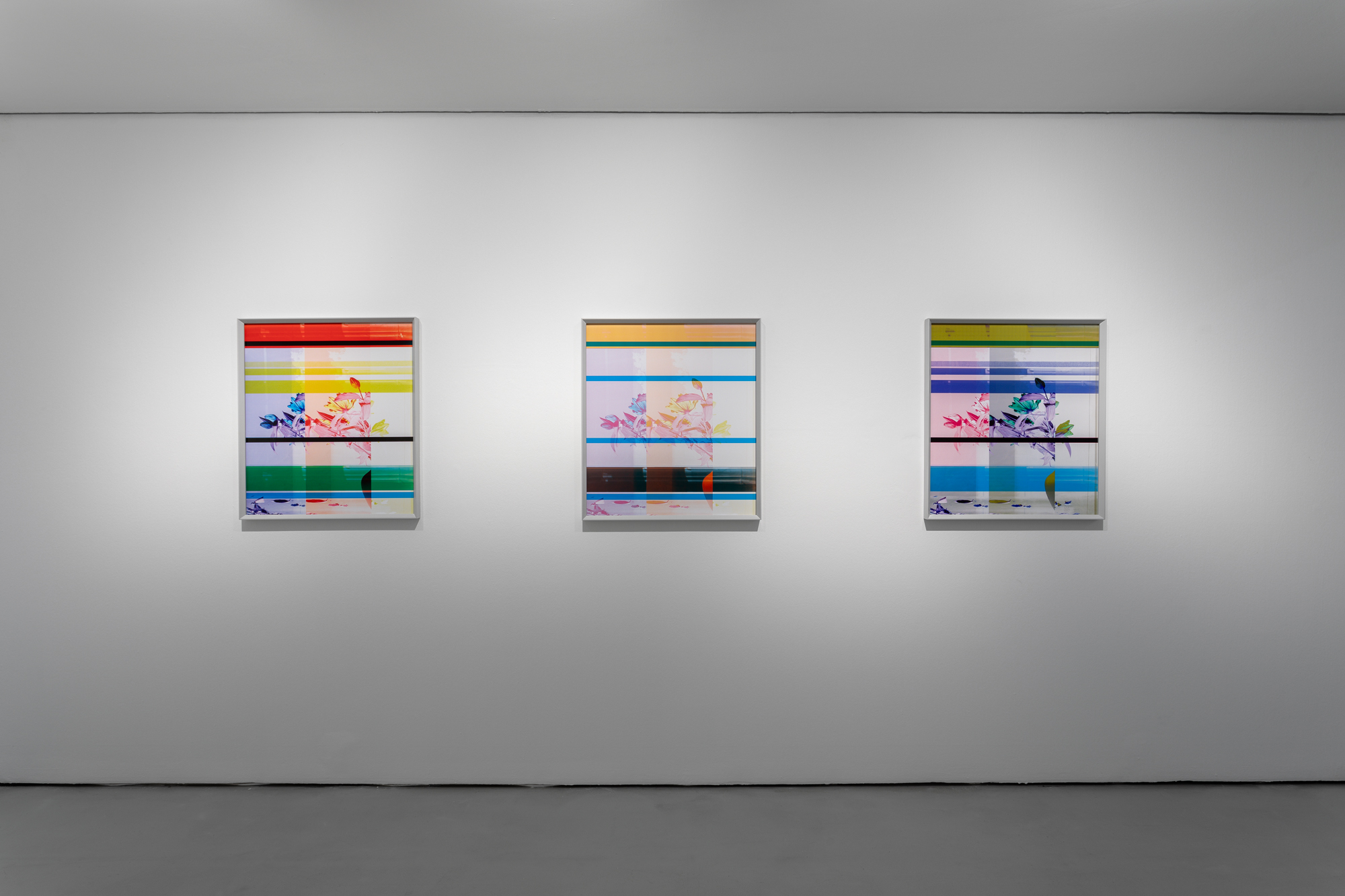
© Vasco Stocker Vilhena
Sabine Hornig’s work explores societal and cultural perspectives as reflected in the built environment, examining the ways in which they shift, both visibly and invisibly. Using a unique combination of sculpture and photography, her practice challenges familiar hierarchies and dominant centralities, through superimposing multiple perspectives of the gaze.
In her new exhibition at Cristina Guerra Contemporary Art, Hornig presents a central sculpture in dialogue with two-dimensional photographic and glass works. Employing techniques of doubling and transparency, these pieces actively incorporate the viewer’s perspective within the physical dynamics of the gallery space.
The centerpiece, Wahlkabine (Voting Booth), consists of a metal structure forming two identical, adjoining rooms. These spaces can only be entered sequentially from opposite directions or observed simultaneously through the permeable walls, with one room serving as the inverse of the other. Each room features a small table, akin to a voting booth, while the transparent walls paradoxically negate the concept of privacy. This installation interrogates the uncanny simultaneity of interior and exterior perceptions and destabilizes once solid certainties. It evokes the disorienting experience of confronting societal paradigms that are suddenly reversed, echoing an Orwellian dilemma. The metal framework, constructed solely from brick-patterned joints, underscores the tension between opposites and their seamless permeability.
In another set of works, sheets of glass are suspended mid-air, suggesting windows within invisible walls that subtly divide the gallery. These glass pieces feature compositions rendered in ceramic paint, which glow in fragmented patterns, resembling coded reflections of unseen environments. Found graffiti elements intertwined with iconic imagery, including a photograph of the 1989 East Berlin demonstrations that precipitated the fall of the Berlin Wall, and fragmented urban elements from Berlin, Tbilisi and New York. These layered, translucent surfaces evoke fleeting associations, inviting visitors to explore ever-shifting perspectives.
As Mark Gisbourne notes in his essay for Passage through Presence*:
“It is a characteristic feature of Hornig’s sculptural art that she uses photographs either translated onto or between sheets of glass to create an interim space of optical consciousness.”
Hornig’s glass works expand on her signature approach used in her window photography, here incorporating thick layers of hand screen printed ceramic paint, kiln-fired onto the glass. This technique imbues the ephemeral quality of photography with the tactile solidity of traditional stained glass. Each piece, with its dual transparency and partial reflectivity, allows the viewer to simultaneously see both its front and back, creating a suspended paradox of spatial and temporal perception. These works multiply and capture the viewer’s gaze, drawing them into a dynamic interplay of inside and outside.
This duality is further explored in the lower gallery with flower still-life works. These frameless glass pieces are supported by metal tripods resembling photographic stands. Depicting highly realistic vases of flowers against dark backgrounds, they evoke the tradition of 17th-century still-life painting. Yet here, the calyxes turn away from the viewer, visible from both sides as a diapositive. The “frame” is not a traditional picture frame but a photographed window frame, creating a Magritte-like paradox. Without a definitive back, the image casts shadows into the room, emphasizing its physical presence.
Hornig extends her layered interstices onto entire architectural facades as public artworks. Four recent excerpts as text-image works are shown in the middle gallery. These were created through overprinted screenprints on paper and resemble political placards. Images of New York architecture are juxtaposed with socially critical statements by former New York mayor Fiorello La Guardia (1882–1947) addressing topics including migration, urban inequality, and war. In this overlay, these timeless statements take on a contemporary explosiveness.
As societies undergo ideological and paradigmatic shifts in terms of value systems, their future appears unbalanced and susceptible to fundamental changes at any moment. In this context, Hornig’s work examines the perpetual negotiation of boundaries and perspectives. Doors and windows become metaphors for transformation, while discomfort with transparency inspires deeper inquiry. In these works, her transparent layers and architectural inversions invite viewers to consider transitions as opportunities for reorganization and reevaluation, embracing the complexity of a multi-perspective vision. In a more expansive context, Wahlkabine critiques the manipulation of truths and borders, drawing parallels to the recurring acceptance of political arbitrariness and unchecked authority. It reflects on the fragility of freedom and the vulnerability of social participation.
Atelier Sabine Hornig
January 2025
*Sabine Hornig, Passage Through Presence, Berlin, 2022, 255 pages. Authors: Mark Gisbourne, Nicholas Baume, Barbara Flynn, Marcus Steinweg, Sabine Hornig